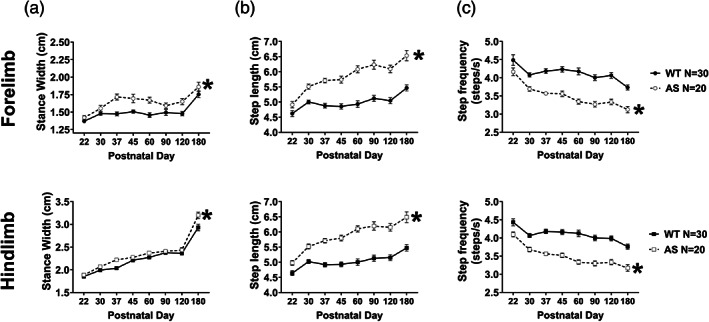FIGURE 4.

Across development, AS mice exhibited slower progression across all spatial gait indices. (a) Stance width between right and left limbs in both fore (top) and hindlimbs (bottom) increased slightly throughout development but was wider in the AS mice, compared to WT mice, throughout. At the oldest time point, both WT and AS mice showed a sharp increase in stance width with a similar slope. (b) Similarly, AS mice exhibited increased step lengths throughout the experiment and the discrepancy in step length was present at weaning at PND22. Additionally, while WT mice had a stabilized step length after PND30, step length continued to increase in AS mice and began stabilizing around after PND60. The same pattern was observed in both fore and hindlimbs. (c) Expectedly, the stepping frequency showed the converse: In both limbs, AS mice showed reduced step frequency that was present at weaning and progressed throughout development, unlike the WT mice which showed a relatively stable, mature cadence after PND30. *p <0.05, main effect of group of two‐way repeated measured mixed effects model
